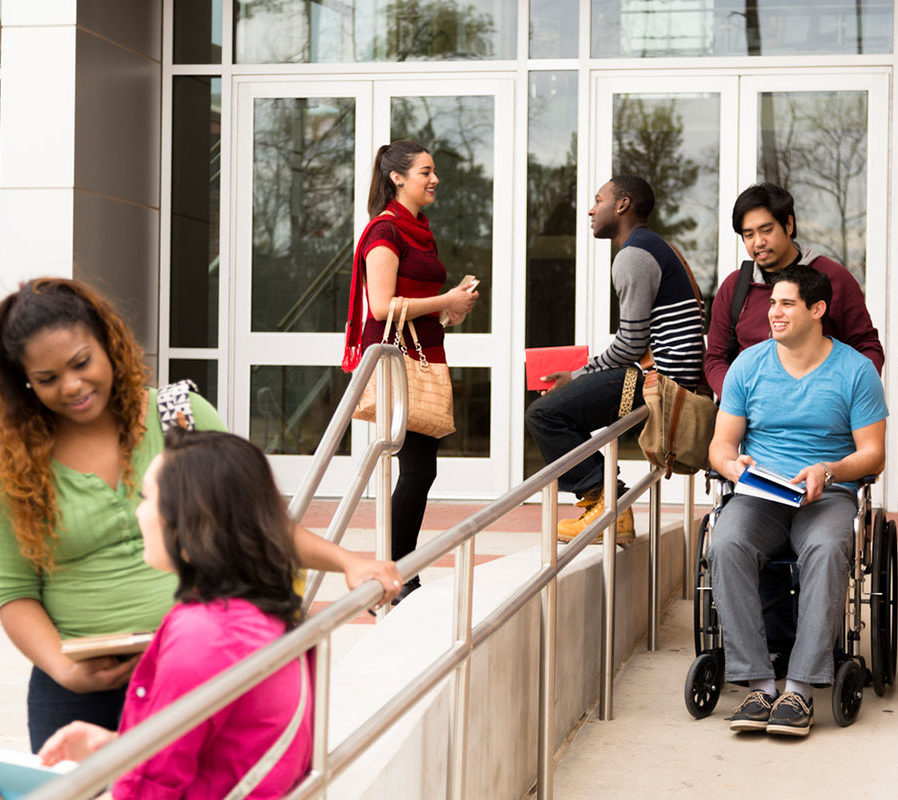Introduction
Notes create a concrete reminder of something important that we do not want to forget. Memory has limitations — both in the moment and over time — and notes provide a concrete place where we can go to recall and reabsorb information for future demonstrations of our knowledge. An effective note will have all required information present to be able to demonstrate that knowledge on a test or practical task.
To get the required information for an effective note, your student must work through a number of steps. They must listen to the lecture; hold the information in their working memory; decide what is worth recording; select the points to record from working memory; and write the points down while still listening to new lecture content (Peverly, 2007, p.167). Students with disabilities can have difficulty maintaining focus which impacts their listening, trouble maintaining or processing information in their working memory, or difficulties with composing information fast enough to keep up with the lecture. As all these processes are tied to the activity of notetaking, difficulties in any of these areas can prevent your student from producing effective notes.
While some accommodations — like having a peer notetaker — are in place to help students obtain effective notes, there are things that you can do to help empower your students to produce their own effective notes. Guided notes, teaching cues, and pauses, repetition, and breaks are some of the ways that you can affect your student’s development and use of effective notetaking skills.
Guided Notes
What are guided notes?
- Guided notes are a handout prepared by the instructor with key details missing — such as key concepts, facts, definitions, etc. — for students to fill in during class. They can be used as an alternative to class notes provided by the instructor.
- Guided notes promote active engagement during lectures as long as there are an adequate number of blanks throughout the handout (Konrad, 2009, p. 440). They can also be used by students to prepare for the lecture.
- By pre-reading the notes, your students can catch the important information during a lecture more easily.
Creating guided notes
- When creating guided notes, it is recommended to keep the missing details short in length. This helps to reduce the load on your student’s working memory by reducing the length of the information they must hold onto while writing the note.
- Keeping the length short also allows students with fine motor difficulties to participate. They are more likely to keep up with the lecture thanks to the reduced writing requirement.
- Providing the guided notes in a digital format gives students the option of typing instead of writing, which may be the difference between legible and illegible notes.
- It can be valuable to include questions at the top of the guided notes to activate prior knowledge, or reflection questions and study guides to help students make inferences and connections between materials.
- Graphic organizers and diagrams that are partially complete can be used within guided notes as these visuals can contribute to your student’s understanding of the information (Konrad, 2009, p.441). Using these visuals can also encourage students to adopt such tools in their own notes.
Teaching Cues
When students are taking their own notes, they may use any number of notetaking formats including the Cornell Method, Mind Mapping, Outline Method, or even writing directly on the slides of a PowerPoint. No matter which approaches your students are using, teaching cues (verbal and written) can reduce the load on working memory and help increase your student’s attention towards the important points of the lecture (Boyle, 2010, p.106). Guiding the student’s attention to important information, increases the effectiveness of their notes.
Two types of cues that can help students are the emphasis cue and the organizational cue.
Emphasis Cues
An emphasis cue is used to focus attention on important information. They include statements like “it is important to remember”, “let me repeat”, and “this is key”.
Another way to signal the students attention is to indicate that a definition or an example of a concept is about to be stated, as these are details that are often examined.
Organizational Cues
An organizational cue is used to help the listener understand the order, sequence, or relationship of the information in the lecture. They include statements like “first of all…secondly…thirdly”, “then”, “next”, and “as a result of”.
If your student hears that there are three types of a particular object, they are likely to create three connecting lines while Mind Mapping or produce three numbers under a definition if using the Outline Method, in anticipation of the three upcoming points. This cue can also help the student realize that they missed important information if they only write down two points instead of three.
Pausing, Repetition and Breaks
Pausing and repetition can also serve as cues.
Pausing
A pause after making a point can indicate to the student that they need to record the last bit of information (Boyle, 2012, p.97). Not only can the pause help cue students, but it can also allow students with working memory difficulties, processing delays, or fine motor function difficulties create a note without having to worry about listening to the next piece of information.
Repeating
Taking the time to repeat or restate important details, indicates to students that the information is important — since you are taking more time with it — and ensures that your students get more of the important points into their notes (p.97).
Breaks
Regular breaks throughout a lesson have been shown to increase focus and concentration during a lecture. A study by Peiris (2021), which looked at the effects of movement breaks, in a university setting, reported that students who completed exercise breaks for 5 minutes every 20 minutes were more focused by the end of the lecture, and did better on a quiz than the students who did not take breaks.
While the application of exercise in the classroom is often difficult to implement in higher education, breaks from listening and taking notes can also be done in other ways. For instance, a break does not always have to be a break from learning. Rather, a break can also be a switch to different learning task with different mental processes that can help your students recover their focus and reduce fatigue. For example, to directly improve the note quality and comprehension of content, Rice (2019, p.30) suggests including breaks where students review their notes and seek clarification by asking questions.
Summary/Key Takeaways
- While students can use their own strategies for notetaking, the teacher has a role that can directly support the student’s notetaking experience.
- You can reduce the strain from various processes through strategies like providing guided notes.
- You can make information and its organization more explicit with teaching cues, making it easier for students to identify what is important and how it fits together.
- You can provide recovery time for your students through pausing, repetition, or breaks that can be used to signal important information, clarify information, or simply give your students a chance to recover from all the steps involved in creating effective notes.
Additional Resources
The text by Rice and Barry provides different ways to break up a lecture with valuable activities that can improve the student’s engagement with the content of a class. The book is available online through the Niagara College database.
Rice, G. T., & Barry, K. (2018;2017;). Hitting pause: 65 lecture breaks to refresh and reinforce learning. Stylus Publishing, LLC.



